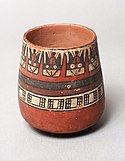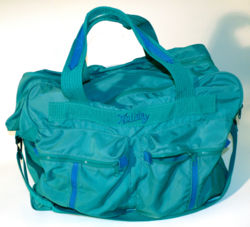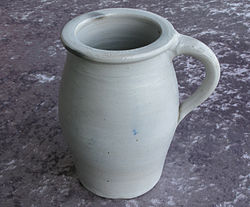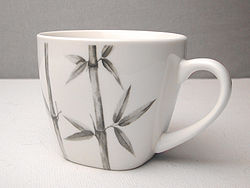Handbook of ornament; a grammar of art, industrial and architectural designing in all its branches, for practical as well as theoretical use (1900) (14597942407)
Identifier: handbookoforname1900meye (find matches)
Title: Handbook of ornament; a grammar of art, industrial and architectural designing in all its branches, for practical as well as theoretical use
Year: 1900 (1900s)
Authors: Meyer, Franz Sales, 1849-
Subjects: Decoration and ornament Art objects
Publisher: New York, B. Hessling
Contributing Library: Wellesley College Library
Digitizing Sponsor: Wellesley College Library
View Book Page: Book Viewer
About This Book: Catalog Entry
View All Images: All Images From Book
Click here to view book online to see this illustration in context in a browseable online version of this book.
Text Appearing Before Image:
.) Spoons and Paterae form a special class of dippers. As theTable-spoon, strictly so-called, will come up for discussion among theutensils, we have heie to consider only the larger spoon-shapedvessels and the Paterae (handled dishes) used for religious and otherpurposes. The natural model of the Spoon is the hollow hand,whence the spherical, elliptical, or oval dish-shape, with an attachedhandle. The latter usually lies in the plane of the rim, but it mayalso form an obtuse angle with it, or, as in the case of the antiqueSimpulum (fig. 11), a right-angle. Egyptian Spoons, which arerichly decorated, often possess a cover rotating round a pin (comparethe projections on the dish, fig. 2), the spoon then becomes a kindof pot or receptacle. A foot is of course superfluous on the ordinarySpoon; but the Paterae with handles not infrequently have a ring-foot to enable them to stand (figs. 7—8). The Spoon and thePaterae may also be furnished with a special spout or lip (fl.g. 6). VASES. 325
Text Appearing After Image:
The Bucket, &c. Plate 192. ?6 The Spoon, &c. — The Prochoiis, &c. As a rule: the Dish is plain, or is slightly decorated byeuoraving the interior, (fig. 6). The decoration is generally confinedto the rim and the handle, or its points of junction. The materialis usually wood, bone, or metal. The size varies with the use. Plate 193. Tiie Spoon, and the Ladle. 1—4. Egyptian Spoons, plainly or richly finished, partly painted. 5. Assyrian spoon-like Vessel. 6. Antique bronze Patera, with lip. 7,9,10. Antique bronze Paterae, seen from the side, from above, and below.8. Antique terracotta Patera. 11—12. Antique Simpula.13. Antique spoon - like Vessel, bronze, United collections, Carlsruhe.1-i. Antique cooking Vesse), like a handled dish, (Menard et Sauvageot). c. Pourers. The Prochous, the Oinochoe, the Olpe, &c. (Plate 194.) We commence the series of pourers with the antique forms ofthe Prochous, Oinochoe, Olpe, &c. As the definition of these appella-tions is not y
Note About Images
Relevante Bilder
Relevante Artikel
BehälterEin Behälter oder Behältnis ist ein Gegenstand, der in seinem Inneren einen Hohlraum aufweist, der insbesondere dem Zweck dient, seinen Inhalt von seiner Umwelt zu trennen (Kompartimentierung). Dabei weisen einige Behältertypen die Möglichkeit eines (temporären) Verschlusses auf (Deckel), damit wechseln diese Behältertypen u. U. auch die klassifizierende Untergruppe, etwa Schachteln, Dosen, Konserven, Tank, Flasche etc. .. weiterlesen



















